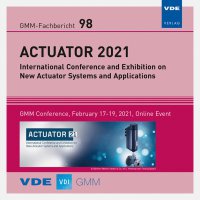Training and Modelling the Non-Linear Behavior of an MR Brake by Using RNN and LSTM
Konferenz: ACTUATOR - International Conference and Exhibition on New Actuator Systems and Applications 2021
17.02.2021 - 19.02.2021 in Online
Tagungsband: GMM-Fb. 98: ACTUATOR 2021
Seiten: 4Sprache: EnglischTyp: PDF
Autoren:
Karabulut, Mehmet Goerkem; Kuecuekoglu, Sefa Furkan; Dede, Mehmet Ismet Can (Izmir Institute of Technology, Izmir, Turkey)
Inhalt:
A magneto-rheological (MR) fluid-based semi-active actuation system, or in other words, an MR-fluid based brake system, was designed for displaying larger amount of resistive forces without jeopardizing the dynamic performance of a haptic interface. The working principle of the MR brake device depends on the viscous fluid called MR fluid that changes its viscosity when exposed to the magnetic field. Thus, generated resistive torque can be controlled via regulating the magnetic field by modifying the electrical current that passes along a coil which provides this magnetic field.Dynamic system modeling is required in order to develop a high-performance control. In this study, modeling methods of an MR-fluid based brake is investigated in terms of its friction and hysteresis characteristics.There are numerous works in the literature in which two well-known learning sequence methods, Recurrent Neural Network (RNN) and Long Short-Term Memory (LSTM), are used for non-linear dynamic system modeling. In the scope of this study, the performance of RNN and LSTM are compared with the Bouc-Wen model which is commonly used in MR-fluid based system modeling. The effect of learning rate and the number of epoch being the important hyper-parameters, for RNN and LSTM models are investigated.In accordance with these information, both methods can be used for the control purposes of a MR-fluid based brake system.


